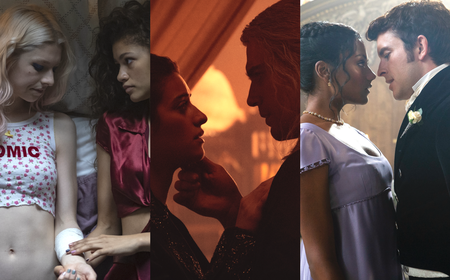
There’s a long history of nudity in the theater, but being onstage en déshabillé is a delicate matter—and not just because of audience sensibilities. The emotional safety of actors performing in the buff is contingent on being in a respectful, consensual environment, which requires predetermined and ongoing consent. Keep reading to learn the naked truth about onstage nudity.
JUMP TO
Some stage works, such as the 1967 musical “Hair,” have nudity written in as an integral part of the script. In other cases, a director may make a creative choice to use nudity in a production of a play that doesn’t explicitly call for it. For example, Benedict Andrews added a nude scene to his 2017 London production of “Cat on a Hot Tin Roof,” which featured Sienna Miller and Jack O’Connell in the buff. A few plays and musicals that either include nude scenes in their scripts or have had productions that used nudity include:
- “The Blue Room” (David Hare)
- “Confederates” ( Dominique Morisseau)
- “Daddy” (Jeremy O’Harris)
- “Equus” (Peter Shaffer)
- “The Full Monty” (Terrence McNally and score by David Yazbek)
- “The Graduate” (Terry Johnson)
- “Hair” (Gerome Ragni and James Rado)
- “The Judas Kiss” (David Hare)
- “Killer Joe” (Tracy Letts)
- “Linda Vista” (Tracy Letts)
- “M. Butterfly” (David Henry Hwang)
- “Metamorphoses” (Mary Zimmerman)
- “Naked Boys Singing!” (Robert Schrock)
- “Oh! Calcutta!” (various writers)
- “Reefer Madness” (Kevin Murphy)
- “Stop Kiss” (Diana Son)
- “Take Me Out” (Richard Greenberg)
- “The Vagina Monologues” (Eve Ensler)
- “Wit” (Margaret Edson)
 conrado/Shutterstock
conrado/Shutterstock
Nudity as a form of expression has long been a part of the performing arts; theatrical performances sans clothing go all the way back to Ancient Greece. Despite some of the U.S. government’s attempts to censor nudity in the media—notably, the 1873 Comstock Act and the 1996 Communications Decency Act—the freedom of artistic expression has largely extended to protecting theatrical nudity.
The primary regulations are focused on protecting actors. These include informed consent during auditions, rehearsals, and live shows, plus rules governing the use of nudity in promotional materials and recordings.
Actors’ Equity Association: Equity has established collective bargaining agreement regulations when it comes to theatrical nudity, which the union regularly updates to reflect changes in our understanding of consent and advancements in technology. Their rules include:
- Nudity should never be requested at auditions.
- Actors must provide written consent for any nude scenes.
- Nudity cannot be captured on camera.
- Audience members are not allowed backstage if any actor is nude.
Take some time to think over these elements to see if you mesh with showing flesh:
- Career goals: Does performing nude fit into your theatrical trajectory? If you hope to land primarily family-friendly gigs going forward, this practice could be a potential roadblock.
- Protections: Don’t be afraid to ask questions about how much flesh you’ll be expected to show and in what capacity, your contract details, the use of modesty garments, and what will be included in promotional materials.
- Personal ethos: Performing nude may go against your religious beliefs, sense of modesty, or relationship boundaries.
If onstage nudity sounds like a decent proposal, here’s how you can protect yourself:
- Look for union roles: Equity productions are bound by union regulations for nude performances.
- Insist on a nudity rider: Nonunion productions may not come with a nudity rider—an additional document that outlines the specifics of the nude scene. If your contract doesn’t include this document, request one; then read it over, preferably with the advice of legal counsel.
- Advocate for yourself: Make sure that the people you’re working with on a production aren’t pressuring you. Don’t get naked onstage if it’s something you’re not comfortable doing.

Eugene Partyzan/Shutterstock
Consent: Although informed, ongoing consent is now emphasized in theater, unbalanced power dynamics and implied hierarchies can sometimes put pressure on actors.
Objectification: Some, like Greg Ehrhardt of the OnStage Blog, believe that allowing nudity onstage isn’t about protecting the public from viewing nude bodies, but rather about protecting performers from the long reach of the public eye. It’s “too easy to turn nude actors into objects,” Ehrhardt writes. Objectification negates one of the central reasons naked bodies are used in theater: to artistically represent the complexity and vulnerability of the human form.
Recordings: Actors performing in the nude are at risk of having their image captured on photo or video. Shortly after Jesse Williams received his first Tony nomination for his performance in the 2022 Broadway revival of “Take Me Out,” footage of his onstage nudity was leaked online—despite the Second Stage Theater’s use of locked Yondr pouches to prevent audience members from taking cell phone recordings. Equity was quick to speak out against the incident as a violation of Williams’ consent.
 Do Actors Really Kiss?
Do Actors Really Kiss? “We condemn in the strongest possible terms the creation and distribution of photographs and videos of our members during a nude scene,” said Equity president Kate Shindle. “As actors, we regularly agree to be vulnerable onstage in order to tell difficult and challenging stories. This does not mean that we agree to have those vulnerable moments widely shared by anyone who feels like sneaking a recording device into the theater. Whoever did this knew not only that they were filming actors without their consent, but also that they were explicitly violating the theater’s prohibition on recording and distribution.
“At every performance, there is a mutual understanding between the audience and the performers that we are sharing an experience limited to this time and place; that trust makes it possible for us to be exposed both emotionally and physically,” she added. “Trampling on this agreement by capturing and distributing these photographs and videos is both sexual harassment and an appalling breach of consent. It is a violation that impedes our collective ability to tell stories with boldness and bravery.”
Industry regulations, a rise in the use of intimacy coordinators, and the banning of audience recording devices help many actors feel safe performing without the protection of clothing. However, others may find that the risk outweighs the reward. For performers who find performing nude overly exposing, viable alternatives include:
- Modesty garments: These accessories offer a modicum of coverage while simulating nudity. Some options include:
- Drawstring pouches
- Shield pouches
- Strapless thongs
- Side thongs
- Strapless briefs
- Nipple covers
- Stick-on bras
- Strapless bras
- Bandeau bras
- Strapless binders
- Tape
- Barriers
- Full-coverage skin-tone bodysuits: “I agree nudity should not be taken out of any script, past, present, or future. But how we depict nudity can certainly change,” wrote Ehrhardt. “Bodysuits are perfectly fine and will have the same effect as nudity.”
- Props and lighting: Strategic use of these tools can prevent audience members from seeing—and potentially recording—performers’ private parts.
Ultimately, for actors to give their all while performing nude, they must feel protected and secure enough to bare it all.
 How Intimacy Coordinators Keep Actors Safe During Sex Scenes
How Intimacy Coordinators Keep Actors Safe During Sex Scenes 














